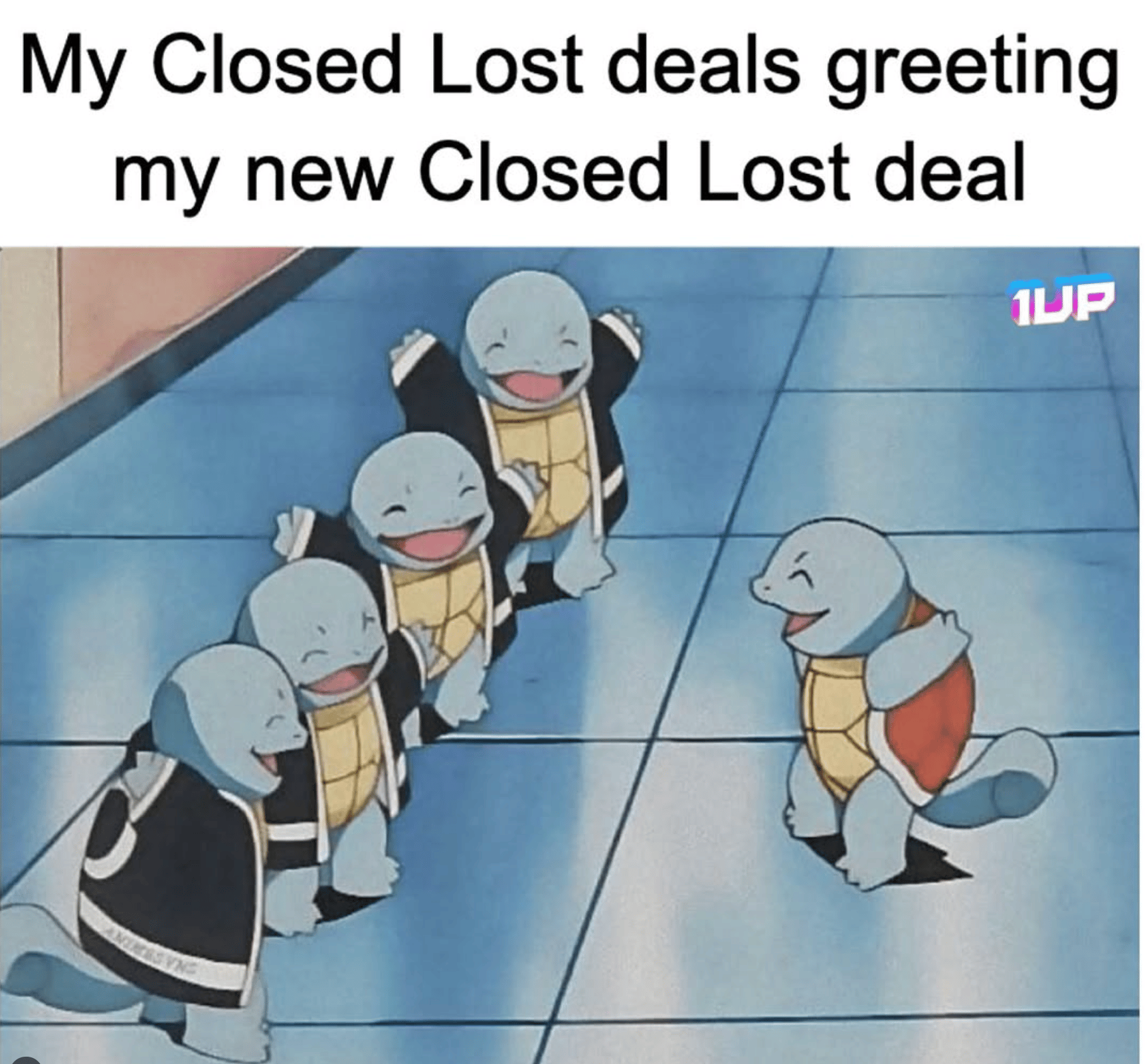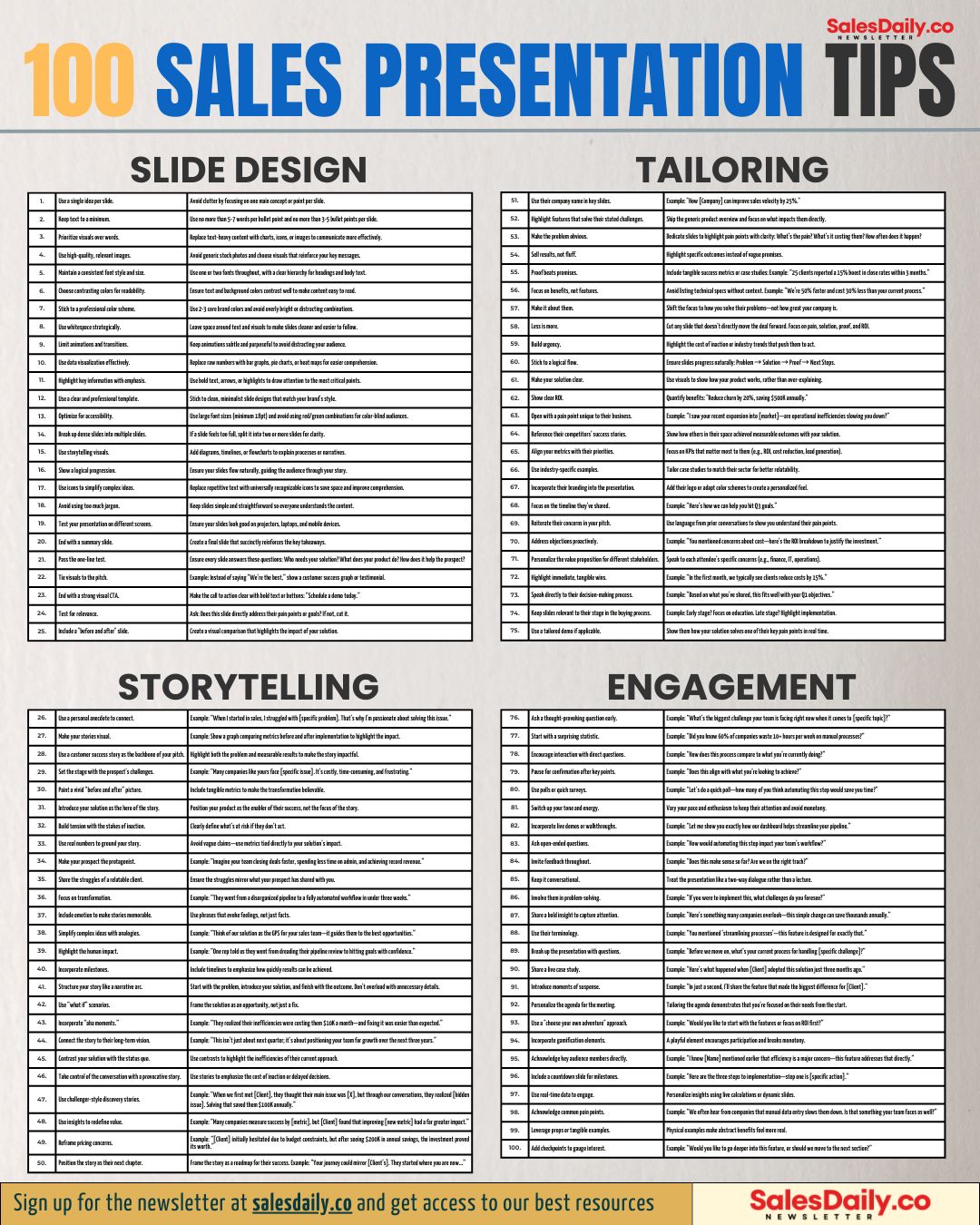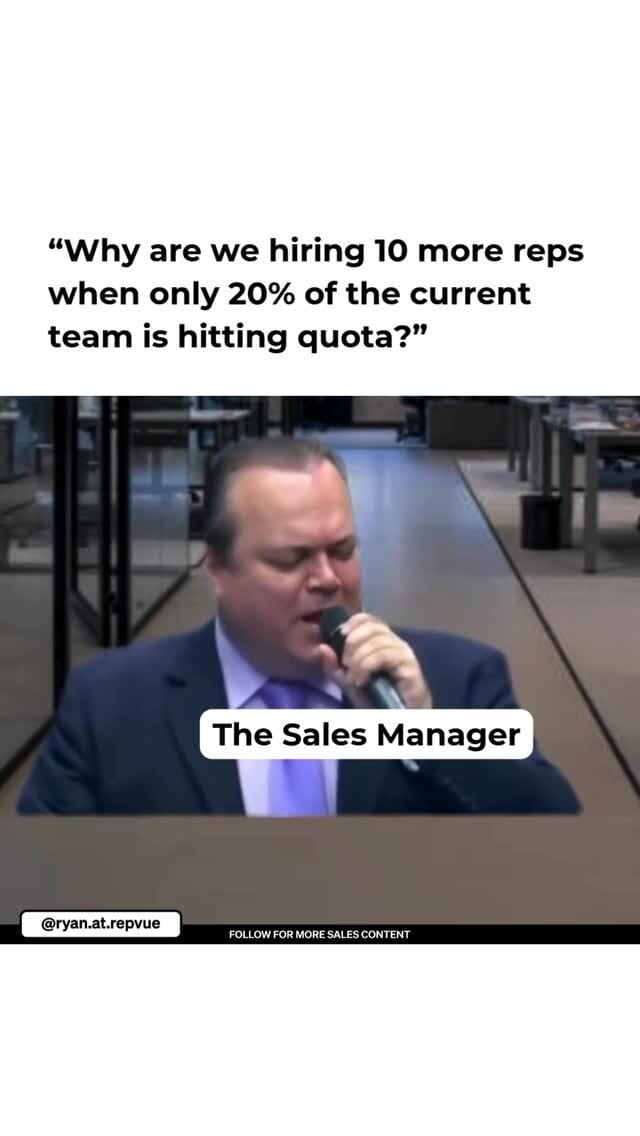- SalesDaily Newsletter
- Posts
- 💻 demo mastery
💻 demo mastery
Common demo mistakes that cost you deals
Daily Sales Newsletter October 15, 2025 |
|
Welcome - this is your daily dose of sharp, tactical sales advice.
Get today’s free resource below 🔥👇
Upgrade to Premium for full access to all infographics, frameworks, and past issues + the AI Sales Mastery Course as a special bonus.
Chris Orlob: 10 questions to ask in sales demos
Peter Cohan: Stop the harbor tour demos
Salman Mohiuddin: Don’t give free trials without this
Mor Assouline: Find out who’s driving your buyer’s decision
10 questions to ask in sales demos
Chris Orlob breaks down the 10 most effective questions to ask during a demo, and what to stop saying immediately.
✋ Stop asking lazy demo questions
Too many demos stall because reps default to filler like:
✘ “What questions do you have?”
✘ “Does that make sense?”
These make you sound unsure and put pressure on the buyer to fill the silence.
Instead, ask targeted, buyer-focused questions that move the deal forward.
✅ Ask these 10 questions instead:
1.) Before a feature demo
“How are you doing [X workflow] today?”
→ This sets up contrast. Your product becomes the better way forward.
2.) Right after a feature demo
“How does that compare to how you're doing it now?”
→ Helps them connect what they just saw to their current inefficiencies.
3.) To spark future thinking
“To what extent do you envision this being useful in your situation?”
→ Guides them to imagine using your product without sounding pushy.
4.) For execs who benefit, but don’t use it daily
“How do you see your team using that?”
→ Connects value to the people doing the work.
5.) For a mid-demo pulse check
“To what degree is this resonating so far?”
→ Gives you real-time insight into how it’s landing—and if you need to course correct.
6.) To tie a feature back to their pain
“To what extent do you see that solving [X problem]?”
→ Creates closure. The pain they shared now has a visible solution.
7.) To have them say the value out loud
“What benefits do you see showing up in your world as a result of what I just showed you?”
→ More persuasive when it comes from them, not you.
8.) To encourage deeper questions
“Where do you want to double-click with a few questions?”
→ Same intent as “Any questions?” but phrased as a pattern interrupt.
9.) When something clearly resonated
“What challenge in your business is making that resonate?”
→ Use this the moment they lean in or get excited. You’ll uncover hidden urgency.
10.) When it’s clearly not resonating
“It seems like that didn’t hit the mark. Where am I missing?”
→ Stops you from digging a deeper hole. Opens a real conversation.
These questions flip the demo from a monologue into a dialogue, without losing control.
They keep the conversation relevant, focused on value, and tied to the buyer’s world.
Stop the harbor tour demos
Peter Cohan shows how sales and presales teams can align to run high-conversion demos using the Great Demo methodology.
Stop the harbor tour
Too many demos are generic product walkthroughs with no direction.
⛔️ No discovery means irrelevant features
⛔️ Buyers can’t connect the demo to real problems
⛔️ Deals die because value isn’t shown
➤ The fix: Stop giving every buyer the same "golden demo." Tailor the flow to their role, goals, and timeline.
Discovery must lead the process
Most discovery calls fall short:
• 5 minutes of rapport
• Confirmation of known pain
• Surface-level tech stack questions
• Then a corporate deck and demo
✅ This leads to mismatched demos and missed opportunities.
➤ Instead, use discovery to understand outcomes each role cares about, and document them in a Situation Slide.
Build a Situation Slide for each stakeholder
The Situation Slide is a tool that clarifies what matters to each buyer.
It includes:
🔹 Title & industry
🔹 Top-level challenge (e.g. hit revenue goals)
🔹 Problems making that hard (e.g. poor discovery, low pipeline)
🔹 Capabilities needed (e.g. dashboards, training)
🔹 Delta (value of solving the issue)
🔹 Critical date (their deadline - not your EOQ)
Use this as both the output of discovery and the guide for what to demo.
Show only what they asked for
Peter tells the story of a rep who demoed the exact dashboards a CEO wanted.
The CEO slid over his credit card.
But the rep kept going. More features. More talk.
⛔️ The CEO pulled the card back. No deal.
✅ Show only the specific capabilities they said they need
✅ Stop the moment they say "Yes! That’s it"
✅ Don’t buy the deal back by over-selling
Use their deadline - not yours
Once you know the buyer’s critical date, build a plan backwards:
• Implementation
• Training
• Contract
➤ This becomes a mutual action plan based on urgency they already feel, not your quota.
Align sales and presales with one slide
The Situation Slide brings everyone into sync:
🔹 Sales and presales know what to show, and what to skip
🔹 Stakeholders see their own goals reflected in the demo
🔹 Buyers stay focused on the business outcomes that matter
✅ The result: demos that feel relevant, fast, and valuable.
Don’t give free trials without this
Salman Mohiuddin lays out how to prevent trial requests from quietly dying by turning them into structured, high-commitment evaluations.
Unstructured trials = dead deals
Buyers love asking for trials.
But without structure, they often end like this:
🟥 "We got busy and didn’t test it out."
🟥 "Still reviewing things internally."
🟥 Crickets... Closed lost.
Trials without a plan waste time and stall pipeline. You can prevent this.
Flip the trial request with one question
When they say: “Can we get a trial so our team can play around with it?”
Don’t say yes right away.
Ask this instead:
🟢 “If you don’t mind me asking… what are you hoping to accomplish during the trial?”
→ This shifts the conversation from a vague interest to a defined outcome.
Align on 3 things before any trial
Once you understand the “why,” outline this 3-part structure:
1️⃣ Map out use cases
⇢ What are they trying to solve? List specific workflows or pain points.
2️⃣ Define success criteria
⇢ What must happen for this to move forward? Tie it to metrics and business outcomes.
3️⃣ Set touchpoints & exec alignment
⇢ Most teams need help mid-trial.
⇢ Propose 2–3 short calls, including one between execs.
🟢 Ask: “Is that an unfair ask?”
→ It’s a soft way to test commitment, and gain buy-in for a serious evaluation.
Send a simple trial plan doc or email
Once they agree, follow up with a quick summary.
For example:
Customer stakeholders
• Jane, Director of Ops
• Alex, Security Lead
Your team
• You
• Solutions Engineer
Use case descriptions
• Onboarding automation
• Audit readiness
Success criteria
• 50% reduction in manual tasks
• Report generation under 2 minutes
Engagement plan
• Kickoff: Oct 18
• Check-in: Oct 24
• Exec alignment: Oct 30
Executive sponsors
• Their SVP
• Your VP of Sales
When you set clear structure and accountability, trials stop being free playgrounds and start becoming serious buying motions.
TO-GO
Brian LaManna: Why your exec demo needs to be different
Natasja Bax: "Can you just show a demo?"
Max Lupertz: I used to say this a lot in my demos.
Nick Cegelski: How to kick of a group demo
Recommended tools*
Mailshake: Cold email made simple and effective
Smartlead: Automate outreach without losing the human touch
folk: Manage relationships and scale outreach in one smart CRM
Systeme.io: All-in-one platform to launch and sell your products
Check them out!
QUOTE OF THE DAY
"Don’t just demo the product; demo the outcome."
PODCASTS
HUMOR

P.S. Stay tuned for tomorrow’s issue on how top reps close large deals. To get all our resources, check out SalesDaily Premium.




Reply